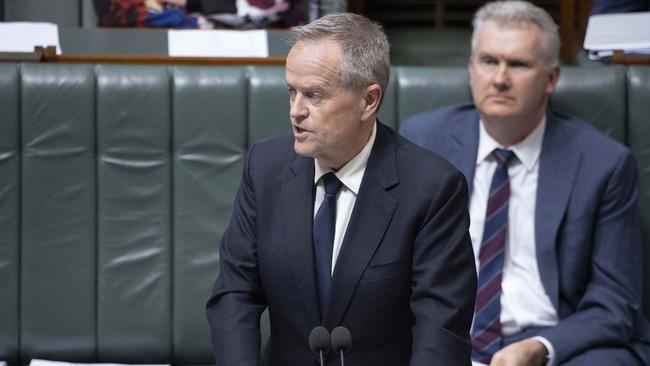
It is now beyond doubt the Albanese government has a plan to clampdown on the benefits of the franked dividends system.
Big companies may be the target of what is emerging as a two-pronged campaign, but every day investors will be hit as less franking credits come through the system. The budget signals an acceleration of the campaign and – importantly – a rare willingness within the ALP government to act immediately and decisively.
In the first round of the campaign Labor announced it would review how companies have been raising money while at the same time making distributions laden with franked dividends.
Tip-toeing into a highly sensitive subject which helped the Bill Shorten-era ALP lose an election, Treasurer Jim Chalmers loudly flagged his intentions, going as far as calling for submissions to help the government formulate a final view (yet to announced).
But in moving to the second part of the campaign the government did not bother with such preliminaries: In the budget measures it announced the second change – which will curtail share buybacks – with no warning and no consultation.
What’s going on here is a bit like the original franked dividend scare in 2019. It’s complex: The people who are hit by the changes have a hard time explaining why they don’t like it and for a politician that is always useful.
Put simply, here’s a recap on how the latest change works: An off-market buyback is where the company directly offers a deal to its shareholders, sidestepping having to pay for shares in an on-market buyback. The companies offer franked dividend benefits within the deal, and shareholders are often willing to sell their shares into the offer because they do better per share sale (post franking) than they might have done at another time. In turn, the companies save money on the costs of the wider exercise, which typically might be a “return of capital”.

The money involved here is substantial. The buyback reforms presented as “integrity measures” to eliminate differences with on-market buybacks are estimated to save the government nearly $200m a year.
Inside the government there are those who have estimated the wider issue of franking credit refunds could cost the government more than $50bn over a decade.
But investors will say the government is not facing billions in “lost” revenue each year from franking, they will point out it is the legitimate return of excess taxes to impacted shareholders.
The ALP found out the hard way that franking refunds are not the preserve of millionaires – rather the majority of franked distribution cash refunds go to middle income retirees who depend on a system they were led to believe would stand the test of time.
That does not mean the franking system is perfect: A lot has changed since then treasurer Paul Keating created the system. The government at that time could not have foreseen the capital management games of today, especially the preference for off-market buy backs.
How will it play out from here?
There is an enormous store of franking credits spread among Australian companies. Many of our larger listed companies – especially mining and resource stocks with bumper profits – will have active plans to distribute franking credits in different ways over the coming months.
Research collected by my colleague Nick Evans and published in The Australian showed that among ASX 100 companies alone there were $66bn in stored up franking credits and that was more than a year ago.
Resource stocks – especially coal stocks – are particularly driven to return capital to shareholders since planning permission for new mines is now so difficult to achieve.
The keenest supporters of franked dividends are tagging the Chalmers changes as the first steps in the dismantling of the franking credit system: This might be true eventually, but it is a stretch of the imagination to claim this on the evidence we have to date.
But the risk is now on the table that Chalmers will gather more support and confidence in how he can further trim – or even terminate – the system at a future date.






